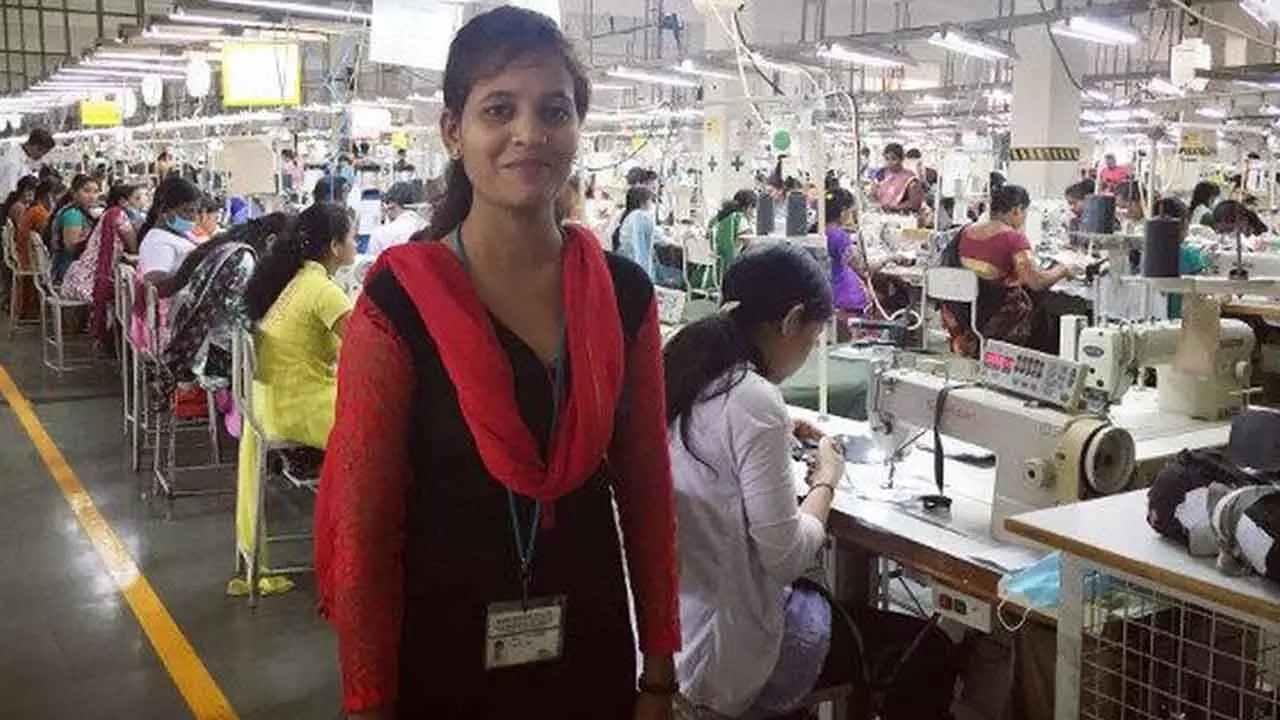Live
- Mercedes-Benz India to Launch 8 New Models, Focus on EVs in 2025
- Collector Inspects EVM Godown in Nagarkurnool
- Devotees' Tragic Demise in Tirumala Stampede: Chakravarthy Acharyulu Expresses Deep Condolences
- Disability can be identified and prevented in the early stages -DMHO Dr. K.V. Swarajya Lakshmi
- Ram Charan's 'Game Changer' Set for Big Box Office Debut
- Scientists Provide Training to Farmers on Integrated Farming
- SP Gaikwad Launches Feedback QR Code Poster for Police Services Opinion
- Helping Hands Charitable Trust Distributes Study Material to 3,000 Students in Gattu Mandal
- Samajwadi Party Strengthens Leadership in Telangana and Andhra Pradesh
- Poco X7 5G and Poco X7 Pro 5G Launched in India: Price, Specifications, and Features
Just In
Bengaluru overtakes Chennai to be India’s best city for working women in 2024


Bengaluru: Avtar group, India’s pioneer in Diversity, Equity, and Inclusion (DEI) solutions and India’s leading workplace culture consulting firm,...
Bengaluru: Avtar group, India’s pioneer in Diversity, Equity, and Inclusion (DEI) solutions and India’s leading workplace culture consulting firm, announced the third edition of ‘Top Cities for Women in India (TCWI)’ index today. Bengaluru reigns supreme by topping the ranking for being the most inclusive, safe, resilient and sustainable cities for working women. It has scored high in skilling and employment for women, infrastructure and caregiving support.
Speaking at the press conference, Dr Saundarya Rajesh, Founder-President, Avtar group said, “Cities are the foundations of opportunity. They shape how women live, work, and thrive. So, a clear understanding of the core principles and cultural fabric of our cities is crucial for advancing women’s progress and inclusion. Avtar’s annual index ‘Top Cities for Women in India” does precisely that, using a data-centric and evidence-based approach.
Criteria for selecting the top 10 cities for Indian women in 2024
120 cities across India were considered for the study, based on their economic contribution to the country. The cities were ranked based on an overall ‘City Inclusion Score’ assigned to every city, inferred from Avtar’s research and existing governmental data. The City Inclusion Score (CIS) is derived from three pillars – Social Inclusion Score (SIS), Industrial Inclusion Score (IIS) and Citizen Experience Score (CES).
The Social Inclusion Score is a cumulative score of four indicators that include city liveability, safety, women’s representation in employment and women’s empowerment. The Industrial Inclusion Score evaluates the extent to which organizations in the city across industries are inclusive of women.
The Citizen Experience Score captures women’s assessment of their cities and is calculated from the responses collated from women across India through FGDs and surveys. It covers six pillars: Skilling and employment, caregiving support, transport and accommodation infrastructure, quality of life, efficiency of government bodies, and safety.
While the first two editions of the TCWI index featured two lists of cities – ‘Million-plus’ cities and ‘Less than a million’ cities, this year’s report has a single unified ranking because of several factors such as outdated population data, rapid urbanisation and migration, and to simplify the execution process for stakeholders.
The findings Regional analysis
The South emerges as the most inclusive region, scoring comparatively higher in both social and industrial inclusion. The average city inclusion score of the South is 18.56. The South is closely followed by the West (16.92). The Central and Eastern regions lag, with averages of 11.79 and 10.55, respectively. This is a result of limited industrial development and opportunities. The North is at 14.00 –It is worth noting that while the industrial inclusion scores of Northern cities like Delhi and Gurugram are high, there is scope for improvement in their social inclusion scores.
State-wise analysis
Kerala leads with the highest average City Inclusion Score of 20.89, followed by Telangana at 20.57, Maharashtra at 19.93, Tamil Nadu at 19.38 and Karnataka at 17.50.
Women’s ratings of cities
Skilling and employment: Gurugram is rated the highest (7.68 – out of 10) by women. Among the bigger cities, Mumbai (7.60) and Bengaluru (7.54) score highest in skilling and employment, while Chennai (7.09), Hyderabad (6.95) and Thiruvananthapuram (5.51) lag slightly behind. Infrastructure: Hyderabad (8.01) secures the highest score for infrastructure (a well-connected public transport system and other travel amenities).
Hyderabad is closely followed by Mumbai (7.64) and Bengaluru (7.52). Among the smaller cities, Coimbatore (7.75) and Kochi (7.41) score high in infrastructure.

© 2025 Hyderabad Media House Limited/The Hans India. All rights reserved. Powered by hocalwire.com






